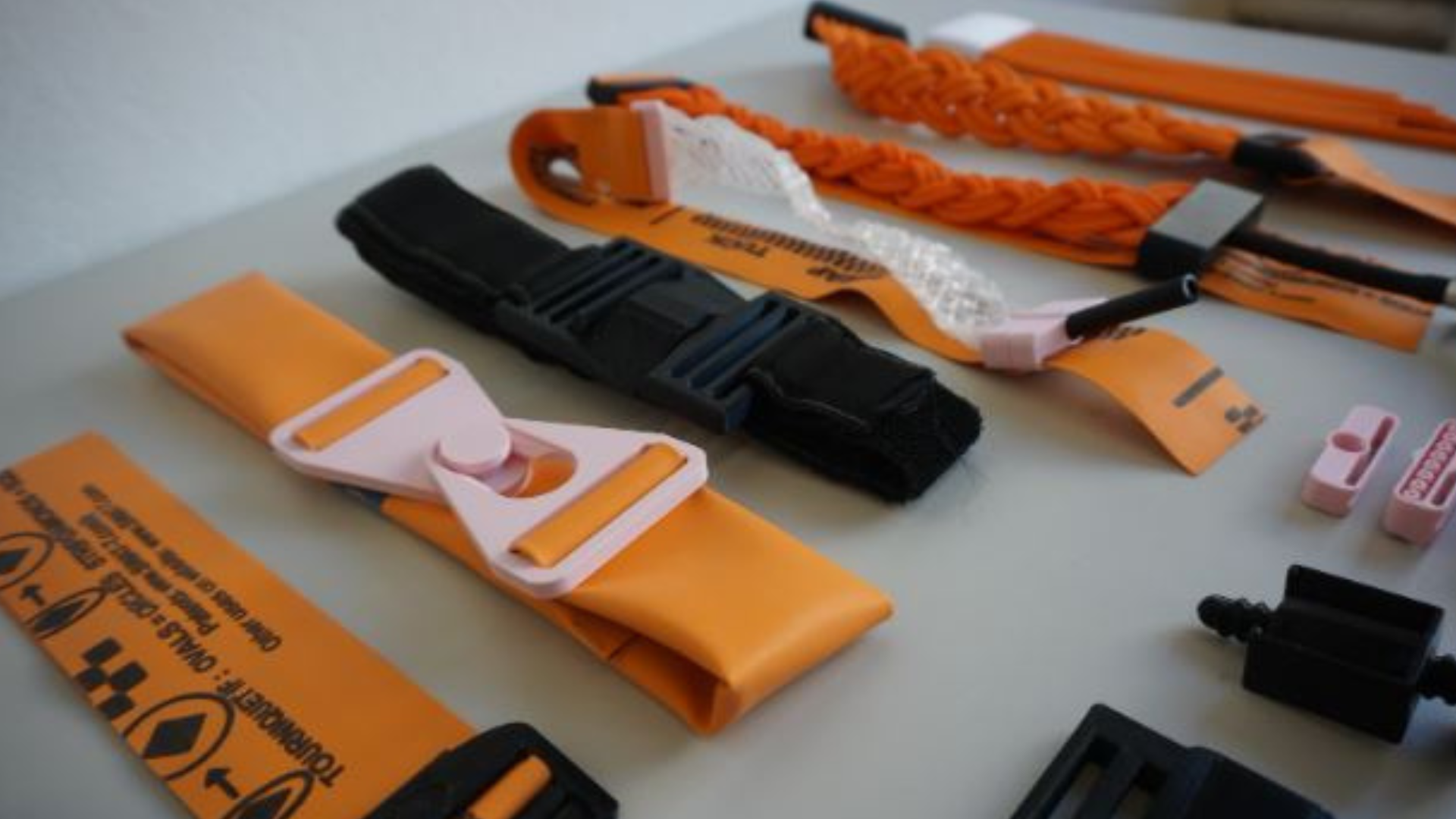
Abstract:
In the critical and shadowed environments of battlefields, paramedics are tasked with providing lifesaving medical care without the use of light to avoid enemy detection. Traditional methods for controlling severe bleeding, such as tourniquets, are fraught with risks under these conditions. Ridima Jain, recognizing the urgent need for a more effective solution, has developed an innovative tourniquet designed for zero light conditions. This development was enriched by valuable consultations with Dr. Arun Kumar Harith, an esteemed army doctor, significantly enhancing the safety and efficiency of battlefield medical interventions.
Introduction:
The use of tourniquets in medical emergencies, particularly in military settings, is a practice dating back to antiquity. While their ability to stop life-threatening hemorrhages is undeniable, their application has often been a subject of debate due to the associated risks, especially under the stressful, poorly lit conditions of battlefields. The need for a solution that mitigates these risks and accommodates the challenging environment of a battlefield is critical. Ridima Jain identified this pressing issue during her experience working with Mobile Hospital Designers and Developers in Noida and the Defence Research and Development Organization (DRDO) in New Delhi, India.
Design and Functionality:
Ridima Jain’s tourniquet is a beacon of innovation in emergency medical technology. It is equipped with a thermal detector and an automated pneumatic braid system integrated with pressure dressing. The thermal detector’s primary role is to identify the active bleeding sites in zero light conditions, guiding paramedics precisely to the wound location.
Once the bleeding site is identified, the tourniquet’s automatic pneumatic braids come into play. These braids adjust themselves around the wound, applying the exact amount of pressure needed to stop the bleeding without risking additional injury. This automation reduces the need for constant monitoring by the paramedic, allowing them to attend to other critical needs of the injured soldier.
Expert Validation:
Dr. Ron Lev, an authority in Advanced Varicose Vein Treatments in Manhattan, endorses the combination of pneumatics and pressure dressing for its precision and uniformity in applying pressure. This method is particularly beneficial in preventing necrosis, a common risk with improperly applied tourniquets. Furthermore, Ridima’s concept has been empirically tested using a peristaltic pump to simulate a blood vessel, showcasing the device’s effectiveness in a controlled environment.
Training and Education:
A critical issue in battlefield medicine, as highlighted by Dr. Arun Kumar Harith, is the general lack of proper training in the use of tourniquets. Incorrect or excessive application can lead to severe limb damage or even loss. The automated nature of Jain’s tourniquet significantly reduces the risk of human error, thereby diminishing the extensive training requirement and potentially saving more lives and limbs.
Conclusion:
Ridima Jain’s innovative tourniquet design marks a significant advancement in battlefield medical care. By combining thermal detection with automated pressure application, this device not only enhances the safety and efficacy of hemorrhage control but also adapts to the challenging conditions of a battlefield. As it gains recognition and validation from medical professionals, this tourniquet promises to save lives and limbs, offering a brighter future for battlefield medicine.
Information
Ridima Jain is an Industrial and Lighting designer born in India, with a Master’s degree in Industrial Design from Pratt Institute in Brooklyn, New York. She is a founding member of the Women in Design NYC Chapter of IDSA and currently a Visiting Associate Professor in the Department of Interior Design at Pratt Institute.
She is known for her innovative approach to design that seamlessly blends nature and culture. Her creations transform the way people interact with and perceive the spaces they inhabit, fostering a deeper connection to their surroundings. Ridima continues to inspire and shape the future of design through her work, teaching, and advocacy.
Ridima Jain / Industrial Designer – Educator
www.ridimajain.com















